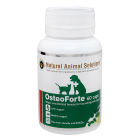
How they Work
NSAIDs work by blocking out production of prostaglandin molecules. These molecules are the ones responsible for your pet feeling pain. When your pet takes an NSAID, the pain subsides and it can return to normal function. This is particularly important for the internal health of your pet, as organs such as the heart and lungs can get the work out they need. Regular exercise also helps your pet maintain proper muscle growth and it helps keep the joints properly aligned. Over time, the improvement in joints and muscles will also help your pet experience less pain.

Choosing the Right Ones for your Pet
NSAIDs developed for human use should never be used with your pet because they do not necessarily work the same way in animals as they do in humans. Be sure to consult your veterinarian before giving your pet any type of medication, including NSAIDs that were created for human use. Even if the NSAID is made for animals, it is always wise to talk to your vet before giving it to the animal to be sure the vet doesn’t need to see your pet.
Understanding the Side Effects
When administering NSAIDs, you must follow your vet’s instructions carefully. Giving your pet too much of the medication can lead to stomach and intestinal ulcers. You will be able to tell if this happens because your pet will begin to have blood in its stool, which means the stool will look blackish and tarry. In some cases, blood in the stool looks like the stool contains coffee ground. Stop administering NSAIDs immediately if you notice blood in your pet’s stool and contact your veterinarian.
Supplying your pet with dosages of NSAIDs that are too high can also lead to death in your pet. In fact, the National Animal Poison Control Center receives thousands of calls each year about NSAID’s ever since Ibuprofen was made into an over-the-counter drug. It is important to remember that, just because the medication can be obtained easily, it doesn’t mean is should be given to your pet in a careless manner. Always follow the directions on the package or the directions provided by the veterinarian carefully. In addition, never administer two different types of NSAIDs to your pet at the same time. Also, check other medications you may be giving to your pet carefully to be sure they don’t contain NSAIDs before giving your pet this type of medication. Doubling up on NSAIDs can lead to lethal dosages.



